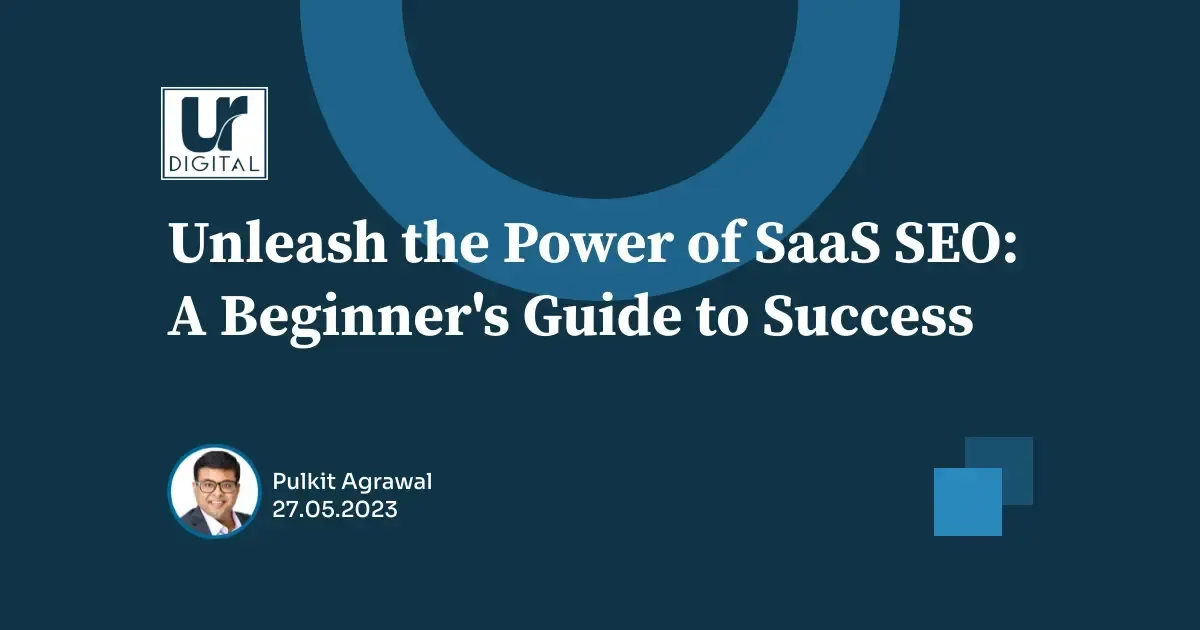Unlocking SEO Success with Google Trends The Ultimate Guide
Consider Sharing
In today's digital landscape, staying ahead of the curve is crucial for businesses. One powerful tool that can help you gain valuable insights and make informed decisions is Google Trends. By leveraging Google's vast data and search patterns, this free tool offers a comprehensive understanding of search trends and user interests. This comprehensive guide will explore how you can leverage Google Trends to your advantage, whether you're a marketer, content creator, or entrepreneur.
Why is Google Trends Important?
Google Trends serves as a window into the collective curiosity of people around the world. This tool provides insight into what people search for, when they search, and how search patterns change over time based on a vast amount of daily search data. With this information, you can identify emerging trends, market demand, optimise your content and SEO strategies, monitor brand performance, and develop new products.
This blog will take you on a journey through the various facets of Google Trends and demonstrate how you can maximise its potential for your specific needs.
Understanding Google Trends
When it comes to understanding user behaviour and search patterns, Google Trends emerges as a valuable tool. Analysing the vast amount of search data accumulated by Google provides a glimpse into the interests and queries of internet users. But how does Google Trends work?
Google Trends aggregates search data from Google's search engine and showcases it in an intuitive and visual format. It allows you to explore the popularity of specific search terms, compare their relative performance, and gain insights into regional interests. You can identify patterns, predict changes, and make data-driven decisions by analysing trends over time.
Key Features and Functionalities of Google Trends
- Trending Searches - One of the standout features of Google Trends is its ability to showcase real-time trending searches. The "Trending Now" section gives you a glimpse of what's currently capturing users' attention worldwide. Businesses, marketers, and content creators can use this information to capitalise on the latest trends and engage with their target audiences.
- Search Term Comparison - Google Trends enables you to compare the popularity of multiple search terms and gauge their relative performance. You can identify the upward or downward terms by visualising the data on a graph. This feature helps you decide which keywords to target in your content and marketing strategies.
- Regional Interest - Understanding regional variations in search trends is vital for businesses targeting specific locations or looking to expand their reach. Google Trends provides data on regional interest, showcasing the locations where a particular search term is most popular. This feature enables you to tailor your strategies to specific regions, optimise your advertising campaigns, and better understand the geographic preferences of your target audience.
- Related Queries - Related queries in Google Trends reveal the search terms frequently associated with your primary keyword. These insights allow you to uncover additional keywords and topics relevant to your niche. Including these related searches in your content and SEO strategies can increase your organic traffic and reach and open up new opportunities.
Tips for Navigating the Google Trends Interface Effectively
- Refine Your Search : Use filters to narrow down your results by time range, location, category, and search type. This helps you focus on the specific data that aligns with your objectives.
- Explore Categories : Browse through the different categories available in Google Trends to gain insights into specific industries, topics, or niches. This allows you to uncover trends and understand the dynamics of various sectors.
- Stay Updated : Regularly visit the Google Trends to stay informed about the latest trending searches and emerging topics. A keen eye on the internet can help you take advantage of opportunities when they arise.
- Experiment and Iterate : Use Google Trends as a tool for experimentation and iteration. Test different keywords, analyse the results, and refine your strategies accordingly. Adaptability and agility are key in the dynamic world of search trends.
Using Google Trends for Market Research
In the ever-evolving landscape of consumer interests, staying updated with popular search trends and topics is crucial for businesses and marketers. Google Trends provides a powerful platform for effectively identifying and capitalising on these trends.
Discovering Rising Search Queries
Google Trends allows you to identify rising search queries, which are search terms experiencing a significant surge in popularity. These rising queries are good indicators of emerging trends, and they allow you to understand evolving consumer interests so you can adapt your marketing strategies accordingly. Keep an eye on these rising queries to stay ahead of the competition and align your content or marketing campaigns with the latest consumer demands.
Analysing Historical Search Data
Another valuable aspect of Google Trends is its ability to provide historical search data. An analysis of search volume and trends over time can provide insight into the longevity and sustainability of a topic or trend. This information helps you make informed decisions about the potential value of targeting certain keywords and topics in your content and marketing efforts.
Finding Niche Markets and Emerging Trends
You can find niche markets and untapped opportunities by exploring Google Trends. Look for search terms and topics that are experiencing steady growth or have a consistently high search volume. These areas indicate the presence of an engaged audience that you can target with specialised products, services, or content. Identifying emerging trends in niche markets allows you to position yourself as an industry authority and stay ahead of your competitors.
Evaluating the Seasonality of Search Trends
Google Trends provides data on the seasonality of search trends, showcasing how search interest fluctuates throughout the year. Understanding seasonal patterns in your industry or niche can help you align marketing campaigns, product launches, and content creation efforts. This helps you optimise your strategies to leverage increased consumer demand during specific seasons or events.
For Optimising Content and SEO Strategies
Creating and optimising content that resonates with your target audience is key to driving organic traffic and improving your website's visibility. Google Trends is a powerful tool to inform and enhance your content and SEO strategies, enabling you to stay relevant and capture your audience's attention.
Developing Relevant Content Ideas
Finding Trending Topics for Blog Posts or Articles
Google Trends allows you to identify and capitalise on trending topics currently capturing internet users' interest. By exploring the "Trending Now" section, you can discover and incorporate the latest hot topics into your blog posts or articles. This ensures your content remains timely, engaging, and aligned with the interests of your target audience.
Generating Ideas for Social Media Content
In the fast-paced world of social media, staying relevant is crucial. Google Trends can inspire social media content by highlighting popular search queries, rising topics, and seasonal trends. Incorporating these insights into your social media strategy allows you to create engaging and shareable content that resonates with your followers.
Conducting Keyword Research Using Google Trends
Identifying High-Demand Keywords
Analysing the search volume data in Google Trends, you can identify high-demand keywords relevant to your industry or niche. These keywords represent topics of interest to your target audience and can be integrated into your content to attract organic traffic and improve your search rankings.
Analysing Keyword Popularity Over Time
Google Trends visualises keyword popularity over time, allowing you to understand how search interest has evolved. You can identify long-term trends, predict future search patterns, and optimise your content strategy based on historical data. This ensures that your content remains evergreen and continues to drive traffic over an extended period.
Enhancing SEO Strategies with Google Trends Insights
Using Popular Search Terms to Improve Website Visibility
It is possible to optimise your website's content based on popular search terms and queries related to your industry. Incorporating them into your website's meta tags, headings, and content can help improve your website's visibility and attract organic traffic from users searching for those terms.
Incorporating Trending Keywords in Content Optimisation
Staying on top of trending keywords can give your content a competitive edge. Monitoring Google Trends for emerging keywords and topics will help you optimise your content. This ensures your content remains fresh, relevant, and aligned with the interests of your target audience.
Monitoring Brand and Competitor Performance
A brand must constantly monitor its performance and stay updated on its competitors' strategies to remain competitive. Google Trends offers valuable insights to monitor brand reputation, assess sentiment, analyse competitor performance, and identify emerging trends.
Assessing Brand Mentions and Sentiment Analysis
Google Trends allows you to track brand mentions and analyse the sentiment surrounding your brand. Monitoring brand mentions over time can help you gauge whether your brand generates an online buzz. Additionally, sentiment analysis provides insights into how users perceive and discuss your brand, helping you identify areas for improvement or capitalise on positive sentiment.
Comparing Brand Interest against Competitors
Google Trends enables you to compare your brand's search interest against your competitors. This valuable comparison helps you understand how your brand performs relative to others regarding user engagement and interest. By analysing these insights, you can identify areas where your brand is excelling and areas that may require attention to stay ahead of the competition.
Identifying Competitor Search Trends
Google Trends allows you to analyse your competitors' search trends and interests. Analysing the data enables you to identify keywords, topics, and strategies that resonate with your competitors' target audience. This information helps you identify emerging trends, stay competitive, and adjust your own strategies to meet the evolving market demands.
Evaluating the Success of Competitor Campaigns
Google Trends provides a means to evaluate the success of your competitors' campaigns by analysing the search volume and interest over time. You can determine the impact of specific campaigns and initiatives undertaken by your competitors by analysing search trends. This knowledge helps you benchmark your own performance, learn from successful campaigns, and make informed decisions regarding your marketing strategies.
Applying Google Trends for Product Development
Google Trends isn't just limited to market research and competitor analysis; it can also be a powerful tool for identifying gaps in the market and testing new product ideas. You can gain a competitive advantage and drive successful product development strategies by harnessing the insights Google Trends provides.
Identifying Gaps in the Market
Exploring Untapped Product Opportunities
Google Trends can help you identify untapped product opportunities by analysing search trends and consumer interests. By monitoring the search volume and interest in specific product categories, you can uncover gaps where consumer demand may not be adequately met. These untapped opportunities can inspire innovative product ideas that cater to the needs and desires of your target audience.
Analysing Consumer Interest in New Product Categories
Google Trends allows you to analyse consumer interest in emerging product categories. Search trends and related queries can help you identify new areas of interest and market segments that are gaining traction. This insight can guide your product development efforts, ensuring you align with your target market's evolving needs and preferences.
Testing Product Ideas and Features
Assessing Demand for Potential Product Offerings
Google Trends can help you assess the demand for potential product offerings. You can gauge consumer interest and demand by analysing the search volume and trends for relevant keywords or product concepts. This information is invaluable for validating your product ideas and determining whether they have the potential to succeed in the market.
Evaluating Consumer Interest in Specific Product Features
Understanding consumer preferences and desires for specific product features is crucial for developing successful products. Google Trends can provide insights into the popularity and interest in different features or functionalities. By analysing related queries and search trends, you can identify the features that resonate with consumers and incorporate them into your product development strategy.
Conclusion
In a world where information is key and staying ahead is crucial, Google Trends emerges as a powerful ally for success. By tapping into the vast data and insights it offers, you can unlock new opportunities, make informed decisions, and unleash innovation. From identifying popular search trends to analysing competitor performance, Google Trends empowers you to navigate the ever-changing digital landscape confidently.
So, embrace the power of Google Trends and let it be your compass in the sea of data. Stay curious, adapt to emerging trends, and use these insights to shape your strategies. With Google Trends as your guide, you have the tools to thrive and conquer new frontiers. Remember, knowledge is power, and Google Trends is the key that unlocks a world of possibilities. So, start exploring, analysing, and leveraging the power of Google Trends today. Your journey to success awaits!
Unleash the power of Google Trends for SEO success. Contact us today to elevate your website's performance and outrank the competition. Let's optimise your digital presence and drive remarkable results together. Get started now with our
free 30-minute SEO consultation.
Author
PULKIT
AGRAWAL
FOUNDER & MANAGING DIRECTOR
Profile
My name is Pulkit Agrawal and I'm the Founder and Managing Director of
UR Digital. I invest my soul and imagination into every client. I have worked across many industries, over the past 15 years and countless highly successful SEO projects and campaigns.
Skills and Achievements
Multi-lingual SEO (English, German, Cantonese, Mandarin and Japanese). Google, Semrush, BEC Australia and LinkedIn certified. Member Entrepreneur Leadership Network. Guest Author Entrepreneur, Semrush & Inside Small Business.
Connect with me on
Consider Sharing











